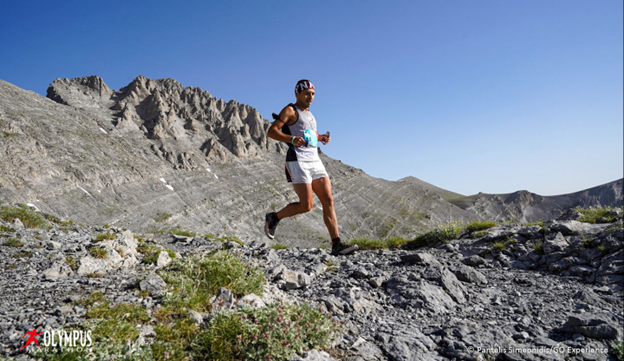 HHP - Update me in site_config > General Configuration
HHP - Update me in site_config > General Configuration
The most historic spot in the world for sports is the namesake of the most prestigious event in sports history: Mount Olympus in Greece.

Photo from World's Marathons
November 15, 2022
by Collin Ulmer
The most historic spot in the world for sports is the namesake of the most prestigious event in sports history: Mount Olympus in Greece.
Yearly, hundreds of individuals that range from 18 to 65 years old have participated in the Olympus Marathon. The course takes runners from a small town in Greece all the way to the Throne of Zeus, 2,780 meters above sea level. Participants maintain pace for 21 kilometers at this elevated level and then back down to the finish.
Recently, Dr. Kyriaki Kaplanidou, Professor of Sport Management at the University of Florida, and a colleague analyzed the effort of the race organizers’ efforts to modify the race to become more environmentally sustainable.
The impetus for the study was COVID-19 and the absence of event during the height of the pandemic. The race organizers saw how, absent the race, many of the negative environmental impacts also subsided. How, then, could they hold the meaningful event without harming the natural environment?
The most important aspect to improving sustainability in the Olympus Marathon was found to be Voluntary Carbon Offsetting (VCO) practices. These are financial donations to nonprofit organizations that reduce carbon dioxide emissions. The size of the donation depends on the estimated emissions by the organization.
VCO practices consider emissions by employees, runners, and organizations. Dionysis decided to survey participants about VCO intentions.
Based on this information, Dr. Kaplanidou and her colleague created a case study for aspring sport managers. Students reviewed the information and then developed plans to run a more sustainable event.
In going through the case study, students are able to “to create a VCO emission marketing plan for sport event participants across multiple promotional platforms such as media, pre–during–post event, signage, and programming.”
***
Read the full article here:
Triantafyllidis, S., & Kaplanidou, K. (2022). Environmental Protection in Nature-Based Sport Events: The Case of Olympus Marathon. Case Studies in Sport Management, 11(S1), S25-S28. https://doi.org/10.1123/cssm.2022-0001
***
Connect with UF SPM: Facebook | Instagram | LinkedIn | Twitter
***